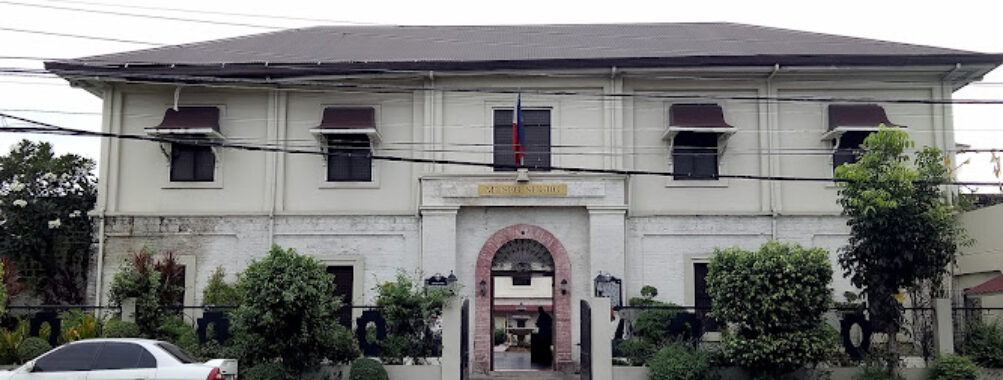
Museo Sugbo
“`html
Table of Contents
Description
Museo Sugbo is one of those places in Cebu that quietly surprises you. At first glance, it looks like an old stone building with thick coral walls, but when you step inside, the stories start unfolding. The museum is housed in what used to be the provincial jail, and honestly, that alone makes the visit pretty intriguing. Imagine walking through corridors where prisoners once lived, and now those same spaces hold artifacts, photographs, and exhibits that tell the story of Cebu’s past. It’s a mix of eerie and fascinating, but that’s what makes it memorable.
Some folks love it right away, soaking in the historical details, while others feel it could use a bit more polish in certain sections. And I get that—some displays are more engaging than others. But for me, that’s part of the charm. It doesn’t feel like a polished, overly commercialized attraction; it feels raw, authentic, and rooted in the real history of the island. It’s not just about the Spanish colonial period or World War II; it’s about the evolution of Cebu itself, with stories of everyday people, revolutionaries, and even prisoners who once lived behind those walls.
What struck me most was the sense of connection. I remember standing in one of the galleries looking at old photographs of Cebu during wartime, and I couldn’t help but think of my own grandparents who lived through those years. It hit me on a personal level, and I think many visitors will find their own moments like that here. It’s not a flashy museum, but it’s real, and that’s worth something.
Key Features
- Former provincial jail turned museum, offering a unique atmosphere
- Multiple galleries showcasing Cebu’s history from pre-colonial times to modern day
- Artifacts from the Spanish era, World War II, and the Philippine Revolution
- Exhibits highlighting local culture, crafts, and traditions
- Guided tours available for deeper insights into the stories behind the displays
- Thick coral stone walls and preserved architecture that reflect the island’s heritage
- Outdoor courtyard that gives a glimpse of the building’s original layout
Best Time to Visit
If you’re planning to go, mornings are usually the best. The museum isn’t too crowded early in the day, and the Cebu heat hasn’t fully kicked in yet. I once made the mistake of visiting in the late afternoon, and while the galleries are shaded, walking around outside between sections felt like stepping into an oven. Also, weekdays tend to be quieter compared to weekends, when tour groups sometimes come through. If you enjoy taking your time reading every little caption (like I do), you’ll appreciate having the space to yourself.
Weather-wise, Cebu is warm year-round, but if you’re pairing this visit with other city explorations, the cooler months from December to February are more comfortable. And if you happen to be in Cebu during Independence Day or Sinulog Festival, the museum sometimes has special exhibits or events that add an extra layer to the experience.
How to Get There
Reaching the museum is pretty straightforward if you’re already in Cebu City. Most taxis and ride-hailing apps know it well, so you won’t have trouble explaining where you’re headed. Jeepneys also pass nearby if you’re feeling adventurous and want to travel like a local, though I’ll admit, I usually go for the easier option when I’m not in the mood to figure out routes.
If you’re staying near the city center, it’s just a short ride away. For those coming from the airport, it might take around 30 to 45 minutes depending on traffic, which in Cebu can be unpredictable. My tip: avoid peak rush hours if you can, because sitting in traffic on Mactan Bridge isn’t exactly how you want to start your museum day.
Tips for Visiting
First off, bring a bottle of water. The museum itself is comfortable, but Cebu’s heat has a way of sneaking up on you, especially if you plan to explore the courtyard or walk around nearby attractions afterward. Wear light clothes and comfy shoes—you’ll be doing more standing and slow walking than you realize.
Photography is usually allowed, but always check the signs in each gallery. Some areas have restrictions to protect the artifacts. I personally loved taking photos of the old jail cells, which still carry that haunting atmosphere of the past.
If you’re really into history, consider joining a guided tour. The guides often share stories you won’t find on the placards, like anecdotes about notable prisoners or tidbits about how the building was constructed. I remember one guide pointing out details in the stonework I would’ve completely missed otherwise.
And here’s a small but important tip: don’t rush. It’s tempting to breeze through, especially if you have a packed itinerary, but slow down and let the place sink in. The museum isn’t massive, so you can comfortably see everything in about an hour or two. But if you linger, you’ll notice little details—the way the sunlight hits the coral walls, or the faded handwriting on an old letter—that make the visit more meaningful.
Lastly, keep your expectations balanced. This isn’t a high-tech museum with flashy screens or interactive displays. It’s more old-school, and that’s part of its character. Go in with curiosity, and you’ll walk out with a deeper appreciation for Cebu’s layered history.
“`
Location
Places to Stay Near Museo Sugbo
Find and Book a Tour
Explore More Travel Guides
No reviews found! Be the first to review!